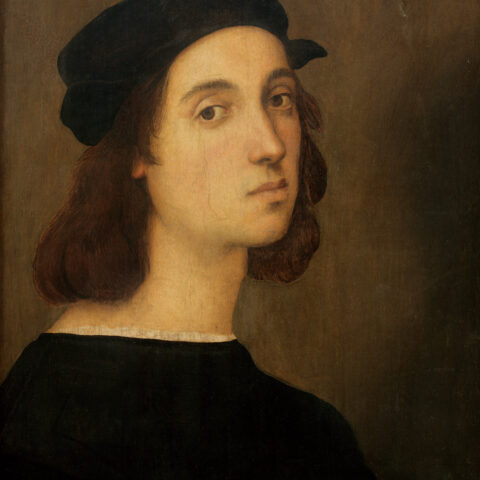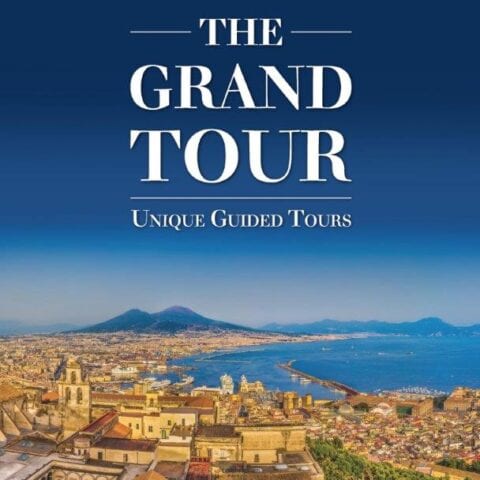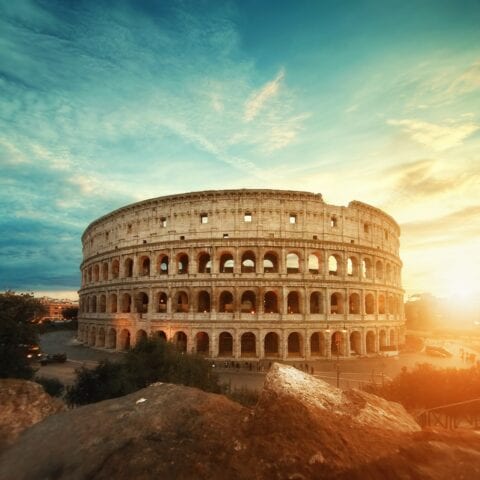Christmas starts early in Italy. The countdown starts off on December 8th with the celebration of the Immaculate Conception (read our Immaculate Conception blog post) and continues to January 6th, 30 days of Christmas!
A canon is fired from the Castel Sant’Angelo to open the festivities. On December 8th, many Italians start to put up their Christmas decorations. Many cities hang up lights in the historical areas, creating a beautiful setting for Christmas shoppers.
Cities will also decorate town square with nativity scenes, Presepio.
Nativity Scene started in the 11th Century with the Church if Santa Maria del Presepe (Saint Mary of the Crib). A nativity scene was created to explain the Christmas story to the parishioners who were unable to read the bible, later popularised by St Francis of Assisi.
The oldest nativity scene is in Rome in the Basilica of St Mary Major, attributed to Arnolfo di Cambio in or around 1289. Up until 1870 many Popes celebrated Christmas Mass at Basilica of St Mary Major.
Interesting point… nativity scenes are set up on December 8th, but the baby Jesus will not be added in to the manger until the evening of December 24th.

Christmas Markets
Christmas markets have become popular in Italy with locals and tourists. The markets offer an opportunity to shop for handmade crafts, like decorations, presents, nativity scenes and seasonal food and drink.
A few destinations with great Christmas markets;
Rome – runs from Dec 8th – Jan 6th at Piazza Navona
Milan – runs from Dec 7th – 10th at Piazza Castello
Milan – runs from Dec 9th – Jan 6th at Piazza Duomo
Florence – runs from Nov 29th – Dec 21st at Piazza di Santa Croce
Verona – runs from Nov 17th – Dec 26th Piazza dei Signori
Naples – runs all year round at Via San Gregorio Armeno
Christmas Food!
Food is an essential part of the celebration of Christmas. Across the country people spend their days preparing pasta, sweet breads and other foods ready for Vigilia (Christmas eve), Natale and the feast of St Stephen (boxing day).
Like most religious festivities, Italians do not tend to eat meat on Christmas Eve in order to purify themselves. The idea is to eat ‘clean’, which for most families means fish and vegetables. After dinner families will attend Midnight Mass.
And for the desserts, one of the most famous… Panattone, an Italian sweet bread originally from Milan. The original will contain candied orange, lemon and raisins. There are other variations like plain or with chocolate. Generally served in a wedge shape, Italians drink it with sweet hot beverages or sweet wine, like Asti or Moscato d’Asti.

Christmas is a perfect time to visit Italy, absorb the atmosphere, eat the winter foods and see the nativity scenes.
6th January – Epiphany – La Befana
Christmas in Italy lasts until 6th January, 12 days after Christmas, known as Epiphany. It is based on the story of the three wise men and it is a public holiday.
The Epiphany feast, known as La Befana, is an important part of the Christmas season in Italy.
La Befana comes from a fairy-tale about a woman who flies around on a broomstick bring presents for children. It is thought that she got lost on her way to visit Baby Jesus in the manger. Because she never got to give her gift to Jesus, she flies around leaving gifts for all children, in the hope that she will finally give a gift to Jesus.
She is usually portrayed as an old woman wearing a black shawl and riding on a broomstick. Figures of La Befana are sold in shops in Italy around 6th January.









Leave a Reply